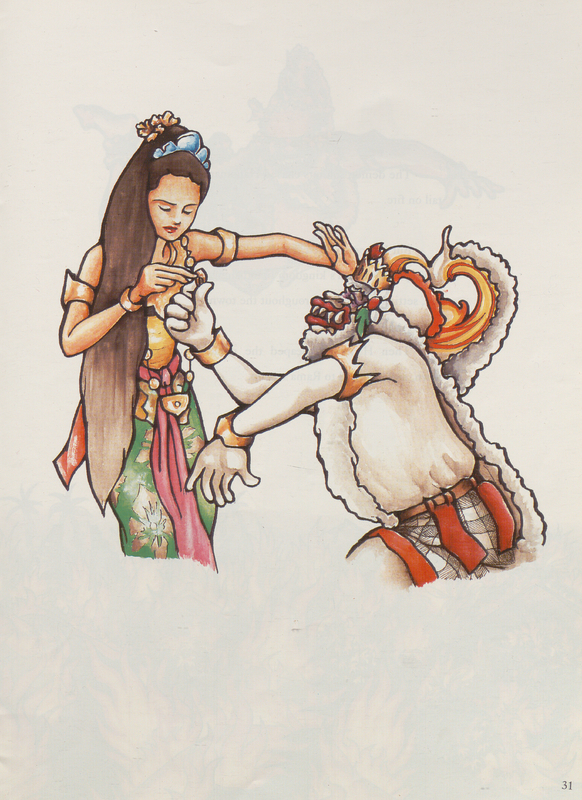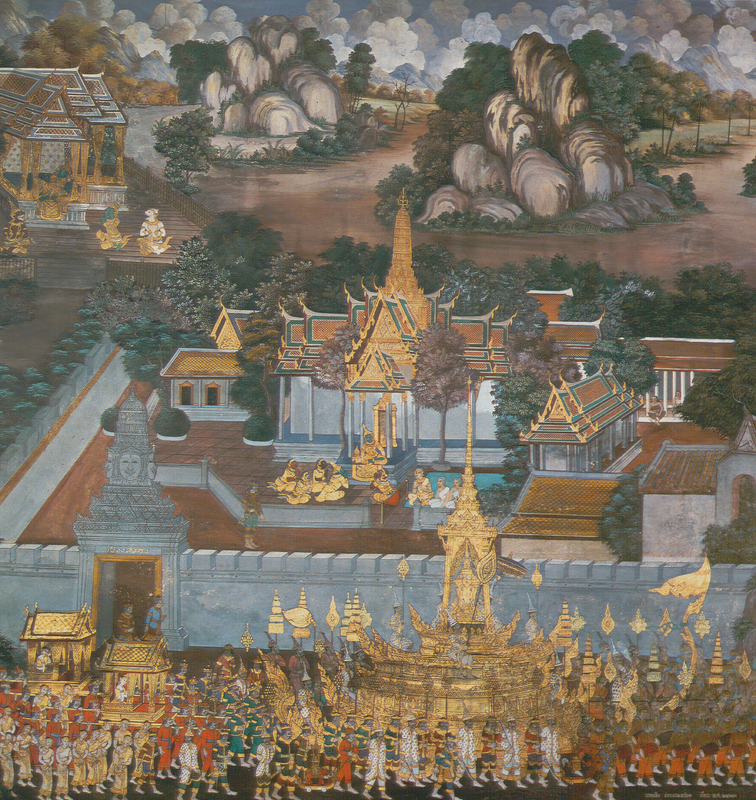Malaysia
Just like Valmiki's version, the Hikayat Seri Rama gained popularity through both written and oral tradition. In Malaysia, puppetry is another popular way to tell the epic. The image below is an example of wayang kulit siam — traditional leather puppetry. Wayang kulit siam puppets are two-dimensional and intricately carved with fierce expressions and ornate decorations. Besides the puppets' dialogue, there is a narrator who gives commentary and an orchestra with drums, cymbals, and gongs.
Interesting, Seri Rama is not portrayed as favorably in the Malaysian version. While Valmiki holds Rama up as a true hero and an ideal man, Malaysian storytellers are more likely to emphasize his weaknesses, such as arrogance and vanity. This makes Rama seem more human, which audiences in Malaysia connected to. Brother Lakshmana is given a greater role in the Hikayat Seri Rama, and Ravana is appreciated as a noble, dynamic character. Hanuman's character also changes; rather than being celibate, the monkey warrior has a lover.
Another notable difference between Valmiki and the Hikayat Seri Rama is in the nature of Kaikeyi's boon. In Valmiki, Kaikeyi is given two boons when she saves King Dasaratha's life. Alternatively, in the Hikayat Seri Rama, Kaikeyi is explicitly told that her son will be king, and she is given an extra boon. This makes her palace ambitions more understandable.

Bali

Thailand

